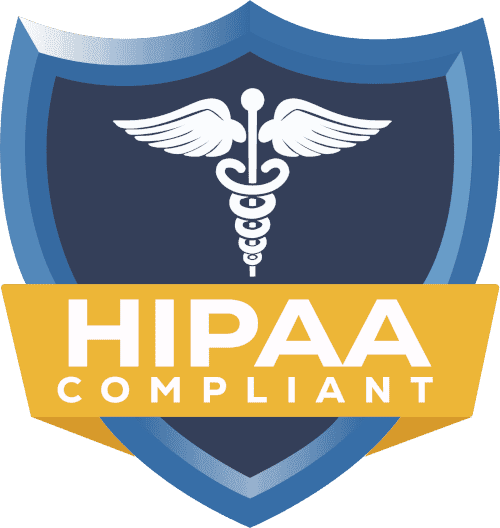What Is Insurance Credentialing? A Simple Guide for Healthcare Providers

If you’re asking how some medical practices succeed while others do not, well, it often is that one crucial administrative process: insurance credentialing. It may not be so glamorous but is certainly required for the financial health maintenance of your practice.
What Is Medical Credentialing?
This is an exhaustive verification process that brings into light the qualifications, experience, and professional background of a healthcare provider. Such an exhaustive evaluation ensures that the standards set by insurance companies, as well as hospitals and other healthcare organizations, in terms of qualifications needed to treat patients and receive reimbursement for services are met.
The process usually includes the following:
- Let the Education and training
- Licensure and certification
- Work history and experience
- Details on how malpractice insurance
- Professional references
- Board certifications
- Hospital privileges
- History of malpractice claims and disciplinary action take place
Think of it as a background check that validates your professional credentials and ensures you’re qualified to provide the services you’re billing for. This verification serves multiple important purposes in our healthcare system.
Why Credentialing Insurance Matters
Credentialing insurance is not just bureaucratic paperwork but a very important function serving several important functions as a critical quality control measure:
For Patients
- Ensuring you get care from qualified providers
- Acceptance of your insurance benefits
- Reduced out-of-pocket expense
- Confidence in your provider
For Providers
- Reimbursement from insurance companies
- Expanded potential patient base
- Potential increase in revenue
- Esteemed professionally
For Insurance Companies
• Providers they’re covering are qualified services
• Risk and quality management
• The formation of standardized networks for their members
• Legally compliant
In a nutshell, credentialing builds a trust infrastructure among all players in the health care game.
What Is Credentialing in Medical Billing?
In the context of medical billing, credentialing is the gateway to getting paid. When the discussion revolves around what is credentialing in medical billing, they relate to the process that makes it possible for providers to:
- File claims with insurance companies
- Get paid at “in-network” levels by receiving reimbursement rates from payer sources
- Be referenced as an in-network provider in directories
- Application to Join Value-Based Program
- Some Aspects of Electronic Billing
Without proper credentialing, you might still be able to see patients, but you will either have to run a cash-only business or bill as an out-of-network provider. This usually leads to higher out-of-pocket costs for patients and lower reimbursement, if not non-reimbursement, for your practice.
The Provider Credentialing Process: What You Should Expect
The typical process of provider credentialing follows:
1. Preparation Phase
Before submitting any applications, gather essential documents:
- Medical license(s)
- DEA registration
- education and training certificates
- board certifications
- professional liability insurance
- work history
- hospital affiliations
- references
- NPI number
- tax ID information
Making a “credentialing folder” with digital copies of those documents can do so much to cut most of the friction out of the application process.
2. CAQH ProView Profile
CAQH ProView is a repository, which most insurance companies use. Completing that profile thoroughly is critical as this represents the base for most of your credentialing applications.
- Complete all sections, do not leave any fields blank
- Upload all the required supporting documentation
- Quarterly update or at each instance of change
- Authorize access for each insurance application company
3. Insurance Application Submission
With your CAQH profile complete, you will submit applications to each insurance company:
- Research which insurance companies to priortize
- Contact provider relations to ensure that they are accepting applications
- Submit applications with all supporting documentation.
- Document submission dates and confirmation numbers.
4. Primary Source Verification
Insurance companies will verify your credentials directly with the issuing sources:
- Institutes where you received educational certificates
- Licensing boards
- Employer or certification provider
- Certification providers
- Malpractice carriers
This tends to take the longest time during credentialing.
5. Committee Review
There is also a committee level at which some of the insurance companies have their respective credentials verified:
- Usually, they meet on a monthly or at quarterly intervals
- Applications must be complete prior to committee review
- These responsibilities have been assigned by some firms to credentialing personnel
6. Contracting
Upon successful verification of your credentials, you will be subjected to the contracting stage:
- Thoroughly examine all terms of the contract
- Understand reimbursement rates before you sign
- Consider having a healthcare attorney look at your contracts
- Negotiate terms where applicable
7. Enrollment
Following contracting is enrollment in the payer’s system:
- You will receive a date that will be effective for seeing patients
- You will be put into the billing system
- You are entered into provider directories
- You can start submitting claims for patients with that insurance
How to Get Credentialed with Insurance Companies Successfully
Successfully navigating the insurance credentialing process requires strategic planning and attention to detail:
Start Early
It is advised to start credentialing between 3-6 months before the intended date of seeing your patients. If all goes well and everything is in order, it takes between 90 and 180 days to get the approval through. The best thing to do would be to have an application that is error-free.
Be Thorough and Accurate
Fill out applications completely and accurately since even small inconsistencies or omissions can cause considerable delays.
Follow Up Consistently
It’s essential to follow up. Contact each payer every 2–3 weeks to check application status and resolve any issues that may pop up.
Maintain Detailed Records
Document every communication with the insurance company, including dates, representatives’ names, and what was discussed.
Consider Professional Help
Many find well-valued professional credentialing services who specialize in operating through this complex process efficiently.
Common Credentialing Challenges and Solutions
Even the best-laid plans can run into some roadblocks:
Challenge: Prolonged Processing Times
Solution: An early start and steady follow-up. Keep a close watch on the progress of each application, and be ready to jump on any issue that may crop up at any time.
Challenge: Errors on the Application
Solution: A double-check of all information for accuracy and consistency before the final submission is recommended. A second review of your applications by another person should be done whenever possible.
Challenge: Closed Provider Panels
Solution: Some insurance panels may be temporarily closed to new providers. Research which panels are accepting providers before applying, or attach a letter of how you can fill a need in that particular practice.
Challenge: Tracking Multiple Applications
Solution: Use spreadsheets or specialized credentialing software to keep track of each application’s status, such as important dates and who to contact.
The Future of Provider Credentialing
The credentialing landscape is moving along:
- Digital verification processes
- Standardization between payers
- Centralized credentialing services
- Integration of credentialing with other practice management functions
- Blockchain technology for credential verification
Stay informed of these trends to adjust your credentialing strategy.
Is Professional Help Worth It?
With so much involvement and a long investment in time, many providers find value in professional credentialing assistance. A typical insurance credentialing service may include:
- Complete application preparation and submission
- Management of the CAQH profile
- Regular follow-up with insurance companies,
- Contract review assistance
- Tracking of credentialing status
- Recredentialing management.
There are costs involved but most providers consider the return an investment in faster enrollment and time saved on administrative tasks.
Conclusion
Provider credentialing with insurance companies is a necessary investment in your practice’s financial health. While the process can be time-consuming, understanding what medical credentialing is and approaching it strategically can minimize frustration and maximize results.
The same professionals never forget credentialing is not a one-time event but a continual process in the management of their practice.
It’s only after proper planning, organization, and persistence that one successfully navigates through the maze of credentialing setbacks and concentrates on what’s essential; excellent care for patients.
Ready to streamline your credentialing process? Consider whether handling it internally or partnering with experienced credentialing specialists will best support your practice goals.



















